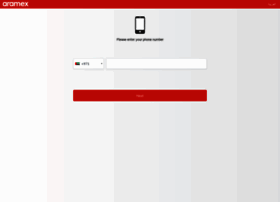


Having to make so many deliveries poses a particularly daunting challenge in the Middle East where many countries have inconsistent or unstructured address systems.
Myaddress aramex com drivers#
“This means instead of making deliveries to a fairly contained set of business locations, we are making thousands and thousands of deliveries, many times of just one package, to a growing number of individual locations that our drivers may not be familiar with.” Now, the split has changed completely and we deliver the majority of our packages to consumers,” explains Faris Fallouh, Global Express & Ground Operations Director at Aramex, Before, we were making more than half of our deliveries from one business to another. “In just the last three years, we’ve seen a fundamental shift in our delivery business from a B2B model to a B2C one. With a growing middle class and the popularity of e-commerce on the rise, the company is now facing a new set of challenges. Using HERE maps, Aramex has created a system for customers in the Middle East to pinpoint their exact location making it easier and quicker for delivery personnel to find them and fulfill an order.Įven in the most “ideal” conditions, delivering packages reliably and on-time can be a complex logistical challenge.įor Aramex, a global transportation solutions provider, with operations in the Middle East, the challenge is multiplied by operating in a region of the world where complex political relationships, prolonged civil wars, and post office monopolies combine to make a seemingly insurmountable tangle of obstacles.Īramex, a “scrappy” startup founded in 1982, however, has managed to overcome these obstacles to become an international business with a brand that’s recognized throughout the Middle East on a par with FedEx and DHL.


 0 kommentar(er)
0 kommentar(er)
